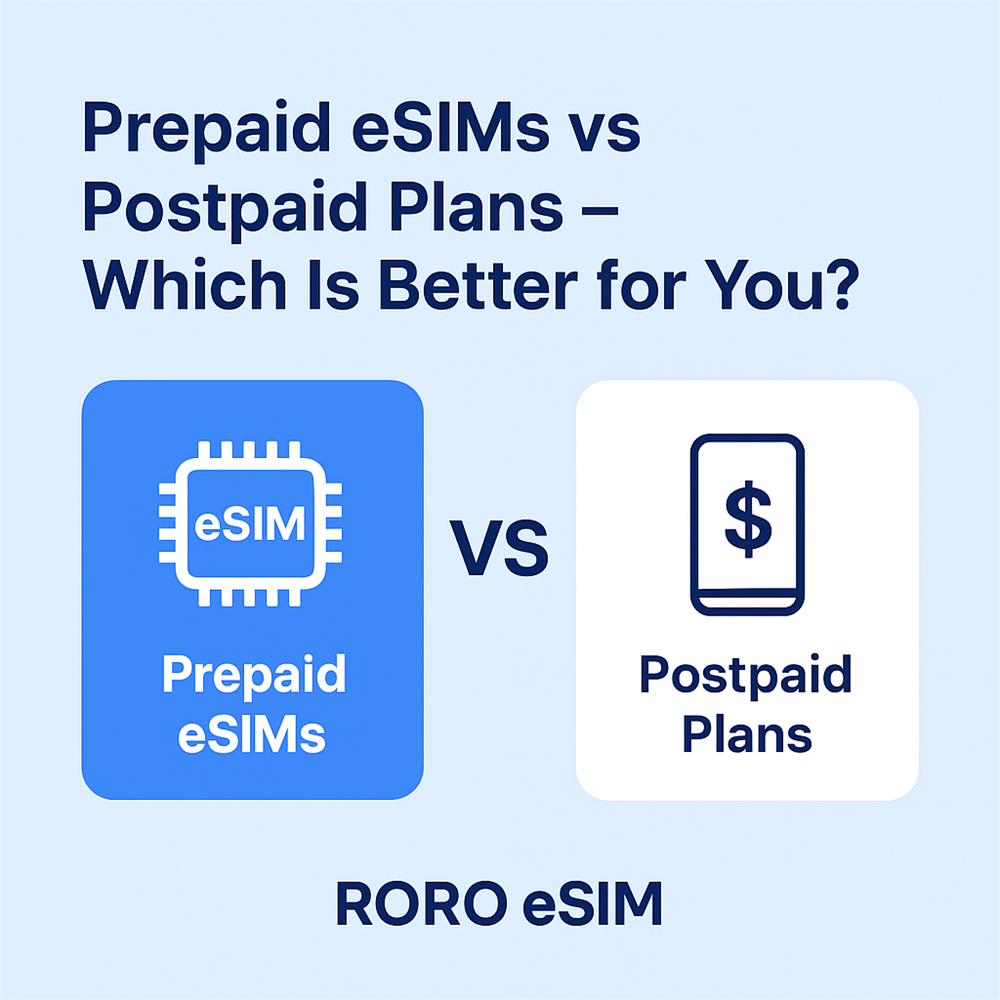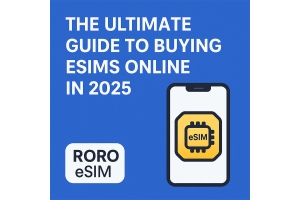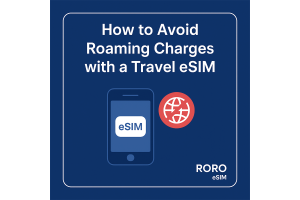
When choosing how to stay connected while traveling or living abroad, one of the most important decisions is whether to go with a prepaid eSIM or a postpaid plan. Each option has strengths and trade-offs, and the right choice depends on your usage patterns, travel style, and budget. Using RORO eSIM as an example, here’s a breakdown of both approaches and which may suit you best.
A prepaid eSIM is a data plan you buy in advance, usually for a fixed number of gigabytes or a limited validity period (days or months). With RORO, for instance, you can choose a plan before you travel, receive a QR code, and install it so you’re ready once you arrive.
Pros of Prepaid eSIMs
No Contract, No Commitment: Since you pay in advance, you’re not tied to a multi-month or multi-year contract.
Control Over Spending: You buy exactly how much data you think you'll need — RORO allows data top-ups so you don’t overpay.
Flexible for Travel: Ideal for trips where you might only need data for a few days or weeks.
No Credit Check: Prepaid plans typically don’t involve credit checks or long-term billing obligations.
Instant Setup: RORO’s eSIM plans can be activated within minutes, and you don’t need to visit a store.
Cons of Prepaid eSIMs
If you miscalculate your data needs, you might run out mid-trip (but RORO supports top-ups).
Higher per-GB cost compared to some long-term postpaid plans, especially for heavy users.
Validity periods may force you to use data within a certain timeframe, or lose some purchased balance.
A postpaid plan is one where you are billed after using data, usually on a monthly basis, much like traditional mobile phone contracts. This is more common for local SIM plans in your home country but can also apply to travel or global plans via eSIM.
Pros of Postpaid Plans
Potentially Lower Cost for Heavy Users: For users with consistently high data needs, postpaid plans may offer more data for less per gigabyte.
Stability & Predictability: Monthly billing means you don’t frequently repurchase data; you know your monthly cost ahead of time.
Higher Data Caps & Perks: Postpaid plans are more likely to come with “unlimited” data, higher hotspot allowances, or bundle perks (e.g., streaming credits).
Continuous Service: You don’t need to worry about data expiring; as long as you pay your bill, your data resets monthly.
Cons of Postpaid Plans
Contract or Commitment Required: May need to commit to several months or longer.
Credit Checks: Many providers require credit card or credit history to offer postpaid plans.
Potential Overuse Charges: If you exceed your allowance, you may face bill shock.
Activation Hassles: Might require more paperwork, verification, or even a physical store visit.
Roaming Cost Risk: If you're using a postpaid plan for travel, traditional roaming fees could apply unless the plan is travel-optimized.
Comparing Prepaid eSIMs (RORO) vs Traditional Postpaid in Practice
If you're traveling abroad or staying temporarily somewhere, prepaid eSIM via RORO usually gives you more flexibility and cost control.
For digital nomads or long-term travelers who need reliable data month after month, a postpaid-style international plan (if available) could be cheaper in the long run — but only if it supports local or regional networks and avoids roaming surcharges.
RORO’s prepaid eSIM plans are particularly valuable for travelers: no long-term commitment, easy top-up, and global coverage.
If you were to try a postpaid travel/data plan, ensure it’s truly “travel-friendly”: unlimited data? hotspot? no hidden roaming fees?
Choosing between a prepaid eSIM and a postpaid plan depends largely on how long you're traveling, how much data you need, and whether you want the flexibility to switch plans. For many travelers, RORO eSIM’s prepaid data plans offer the perfect balance of cost, convenience, and control. But if you're planning to live abroad or travel continuously, a postpaid-style plan may make sense — as long as you carefully read and choose a plan tailored for international data needs.
When in doubt, calculate your data requirements, compare the total cost (including any roaming or overage fees), and then decide which type of plan aligns best with your travel style.





